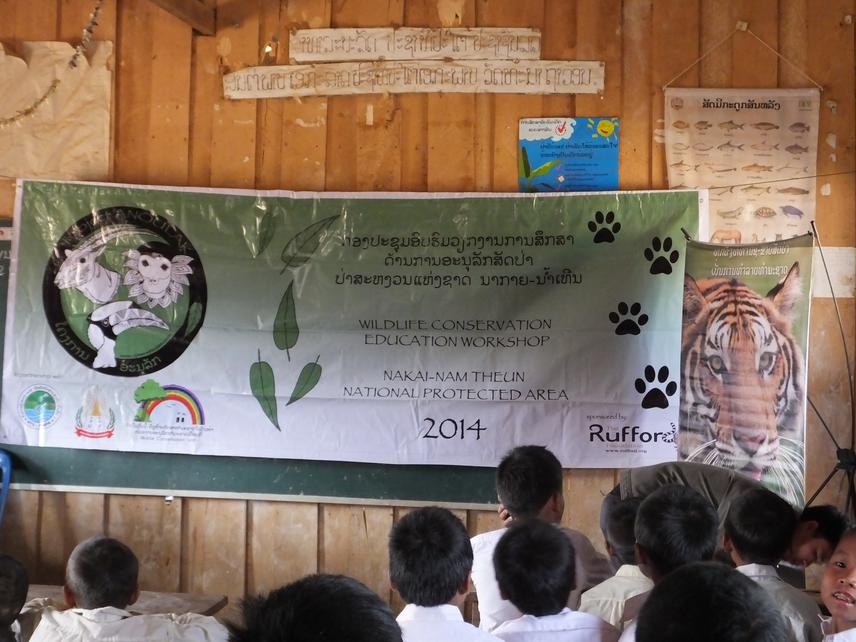Social media video featuring the project.
Wildlife conservation education in Nakai district, Khammouan Province, Laos
15 Oct 2013 Nakai-Nam Theun National Protected Area, Laos, Asia Primates | Communities | People
Towards a Long-Term Conservation Education in Nakai-Nam Theun National Protected Area, Laos (Phase 2)
Scaling up our Biodiversity Literacy Project in Nakai-Nam Theun National Protected Area, Laos through Teachers Training and Education Resources (Phase 3)
Implementation of a pilot environmental education project to increase knowledge about and change attitude towards nature in children and ultimately change the behaviour of the next generation in Nakai-Nam Theun National protected Area, Central-eastern Laos.

NNT NPA is one of the largest remaining contiguous and little encroached forest blocks in the Indochinese peninsula and holds rare, endemic and highly threatened species, including: two of the world’s last large mammals discoveries, CR Pseudoryx nghetinhensis and CR Muntiacus vuquangensis; the world’s largest population of EN Pygathrix nemaeus and EN Nomascus siki; over 430 birds, one of the highest numbers found in a single protected area in Southeast Asia.
Despite its status as a protected area, the management strategy in place has been failing with no control over illegal poaching (principally for the international wildlife trade). It is clear that given the lack of current protection, this project (named Project Anoulak [=conservation in Lao language] will benefit to the long-term wildlife conservation in the area.
In the area, teaching levels are low and materials are almost inexistent. Villagers are generally not aware of the National or Global status of local species and did not receive any basic environmental education. Providing a curriculum on environmental education adapted to the area’s schools, including teachers training and educational material creation, will empower the next generation to become conservation actors. If children living within the NPA develop a strong knowledge in the environment and resident wildlife, a positive attitude towards it and the capacity to change their behaviour this will have a long-lasting impact on the wildlife and habitat of the area.
Informing villagers about the local species’ status, ecology and importance for human’s wellbeing are crucial for the long-term sustainability of this conservation project to build pride and empower communities to be actors in the protection of the ecosystem. This pilot program is targeting school children: the next generation of the area’s inhabitants. Through this long-term environmental education program, we aim to increase knowledge of wildlife conservation issues, change the attitude, and ultimately the behaviour towards wildlife.
The expected outcomes of this pilot program are to:
(i) deliver appropriate messages about environmental issues, the local wildlife’s global and regional status and ecology, the links between ecosystem protection and human sustainable livelihood through fun and pedagogical school-based activities, presentations and games aimed at children;
(ii) train the village’s teachers on how to integrate environmental education activities in their curriculum;
(iii) promote Project Anoulak’s scientific research and its importance to build local pride of endemic and threatened wildlife.
Social media video featuring the project.
Wildlife conservation education in Nakai district, Khammouan Province, Laos